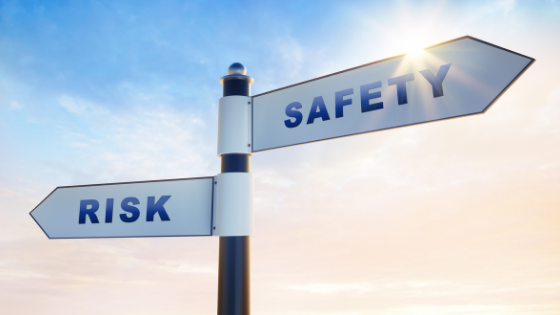Occupational risk management isn’t just about practicality. It’s about peace of mind.
You want your workers to go home safe. But safe is just as much a state of mind as anything else, and your workers won’t go home feeling safe if they know that hazards are lurking around every corner.
Here are a few key risk management tips that EHS workers and managers can implement in their workplace.
Create (and Communicate) a Health and Safety Policy
The first order of business is to create and communicate a strong health and safety policy. Start by identifying your objectives and hazards that are specific to your industry. Identify the types of accidents that are likely to occur and accidents you hope to prevent.
From there, make a list of steps the company will take to protect its employees. This should include identification of hazards, regular safety risk assessments, and protocols if a hazard is found. Always be sure to use actionable statements in your policy. Any worker, in reading your policies, should know exactly what is expected of them in a given situation.
And on that note, when you’ve finished writing your policy, make sure that every single one of your workers knows exactly what it entails. Hold regular training sessions. Make sure that all workers are briefed on the sections that are specific to their jobs. Give them the change to ask questions.
You should also post the policy in key areas, such as hallways, the lunch room, work sites, and other areas. Food safety rules, for example, should go up in eating areas. You can also use a mobile app or safety software to make sure employees can access the policy anywhere, at any time.
Build a Health and Safety Culture
Building, distributing, and enforcing your policy is all part of a larger goal: building a safety culture.
You see, workplace safety isn’t just the responsibility of the manager or the HR department. Every individual worker contributes to the safety of a workplace, and every worker plays a role in preventing hazards.
One way to do this is to create an incentive system which rewards workers for going above and beyond to keep others safe. You should also make safety trainings a part of your regular workplace roster. And if you’re a manager, now is the time to lead by example. Show employees the behavior you expect of them, and they’ll follow your lead.
Identify, Evaluate, and Manage Hazards
Workplace hazards are anything that can cause harm to a worker. Part of creating your workplace safety policy is identifying any potential hazards that could arise in your workplace. Don’t overlook small details – clutter in the hallway can easily turn into a slip and fall risk.
Once you spot hazards, take action to mitigate them as soon as possible. You should also establish a protocol for employees to report and deal with hazards.
Tools for Occupational Risk Management
Occupational risk management is just one way that employers keep their workers safe. We know that your employees are the backbone of your company. And we know that it’s incumbent on you to take care of them, even against challenges you’ve never encountered before.
That’s why we’re proud to provide top-of-the-line safety solutions to leaders in more than a dozen industries. No matter how big or small your safety challenge, how many workers you have, or how novel your problem is, we’re ready to help you face it.
Learn more about EHS Insight's suite of EHS software solutions today.

